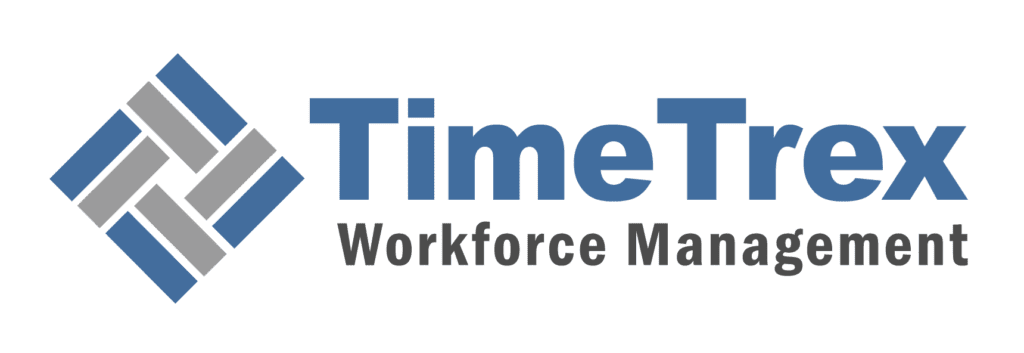
Microsoft's 2025 Layoffs and its All-In Bet on an AI-Powered Future
Article Index
Part I: Executive Summary
In a year marked by record profitability and stock market highs, Microsoft has undertaken one of its most significant and systematic workforce restructurings in recent history. Throughout 2025, the technology giant has eliminated over 15,000 positions globally, a series of calculated actions that signal a profound and aggressive strategic pivot. These layoffs are not a reaction to financial distress but rather the deliberate execution of a dual-pronged strategy: funding a monumental $80 billion investment in Artificial Intelligence (AI) infrastructure while simultaneously re-engineering the company's fundamental cost structure through an efficiency drive aimed at "flattening" its organization. This report provides a comprehensive analysis of these layoffs, deconstructing their strategic drivers, financial implications, and human cost to offer a forward-looking assessment of Microsoft's high-stakes gamble on an AI-powered future.
The workforce reductions in 2025 have been methodical, affecting a wide range of divisions. The most significant cuts occurred in May, with approximately 6,000 roles eliminated, and in July, with a further 9,000 jobs cut. These actions align with Microsoft's historical use of large-scale layoffs to finance major strategic shifts. The primary impetus is twofold: reallocating capital from salaries to AI infrastructure and leveraging its own AI tools, like Copilot, to automate workflows. CEO Satya Nadella's admission that AI writes up to 30% of the company's code starkly justifies cuts in engineering.
Nowhere is this strategy more apparent than in the Microsoft Gaming division, which is being systematically "harvested" to fuel the AI engine. The closure of studios like The Initiative and cancellation of ambitious games such as Perfect Dark and Everwild represent a retreat from creating blockbuster exclusive content, shifting towards a service-oriented model centered on Game Pass. While Wall Street has rewarded this ruthless prioritization of shareholder value, it has severely degraded employee morale and trust, fostering a culture of fear. This discontent is creating fertile ground for labor activism, potentially leading to a unionized workforce in the future.
In conclusion, Microsoft's 2025 layoffs are a display of ruthless strategic focus. The company is consciously sacrificing employee loyalty, institutional knowledge, and entire business units on the altar of AI supremacy. The stakes for the company, its employees, and the tech industry could not be higher.
Part II: Anatomy of a Corporate Realignment: Deconstructing the 2025 Layoffs
The workforce reductions executed by Microsoft throughout 2025 were not isolated events but a systematic, multi-phase action to reshape the company. An examination of the timeline, scale, and historical context reveals a deliberate playbook where headcount reduction is a primary tool for enforcing and funding major corporate pivots.
By the Numbers: A Year of Systematic Reductions
The most significant announcement came on July 2, 2025, with 9,000 job eliminations, about 4% of its 228,000-strong global workforce. This was the culmination of a year of sustained downsizing:
- January 2025: ~1% of staff cut as part of the standard performance review cycle.
- May 2025: ~6,000 employees laid off (nearly 3%), focusing on product and engineering roles.
- June 2025: ~305 positions eliminated, mainly at the Redmond headquarters.
Aggregated, these actions exceed 15,000 employees eliminated in the first seven months of 2025 alone, representing nearly 7% of the company's total headcount. This rapid, large-scale reduction signaled a profound strategic realignment.
A Pattern of Restructuring: Placing 2025 in Historical Context
The 2025 layoffs are consistent with a pattern of using large-scale workforce reductions to finance strategic pivots:
- 2014: The largest layoff in Microsoft's history saw 18,000 jobs cut (14% of the workforce) following the Nokia acquisition, enabling the "mobile-first, cloud-first" pivot under new CEO Satya Nadella.
- 2023: Following the $69 billion Activision Blizzard acquisition, 10,000 jobs were eliminated to achieve "post-merger synergies" and realign resources.
- 2024: The gaming division saw continued cuts, with 1,900 layoffs in January and more in May and September, as part of a multi-year integration process.
| Year/Date | Employees Laid Off (approx.) | % of Workforce (approx.) | Key Affected Divisions | Corresponding Strategic Initiative |
|---|---|---|---|---|
| 2014 | 18,000 | 14% | Nokia Devices and Services | "Mobile-First, Cloud-First" Pivot |
| Early 2023 | 10,000 | <5% | Various, incl. HoloLens, Engineering | Post-Activision Blizzard Acquisition |
| Jan 2024 | 1,900 | <1% | Activision Blizzard, Xbox | Gaming Division Integration |
| May 2025 | ~6,000 | ~3% | Product, Engineering, LinkedIn | AI Pivot and "Flattening" Initiative |
| July 2025 | ~9,000 | ~4% | Xbox, Sales, Marketing, various | Major AI Capital Reallocation |
| Sources: Company announcements and public news reports. | ||||
Part III: The Twin Engines of Change: AI Investment and the Pursuit of Efficiency
Microsoft's 2025 layoffs are driven by two interconnected imperatives: the financial necessity to fund a historic pivot to AI and an operational philosophy of aggressive efficiency, enabled by AI itself.
The $80 Billion Imperative: Funding the AI Revolution
The primary driver is Microsoft's monumental $80 billion capital expenditure for fiscal year 2025, mostly for data centers and specialized chips for AI. This massive investment pressures operating margins, forcing the company to seek substantial savings, with payroll being the largest lever. Financial analysts suggest Microsoft may need to cut at least 10,000 jobs annually to counteract this margin pressure. In essence, the company is shifting billions from operational expenditures (like salaries) to capital expenditures (AI hardware).
From Coders to Copilots: AI as an Efficiency Driver
The second engine is the internal deployment of its own AI tools to automate tasks and boost productivity. CEO Satya Nadella revealed that AI now writes "maybe 20, 30% of the code" on some projects, with CTO Kevin Scott predicting this could reach 95% by 2030. This provides a clear business case for reducing engineering headcount. Microsoft has even begun tying employee performance evaluations to their use of internal AI tools like Copilot, accelerating the productivity gains that justify further job cuts.
"Flattening" the Organization: The War on Middle Management
Complementing the tech driver is a structural one: a company-wide initiative to "flatten" the organization by "removing layers of management." This aims to increase agility and speed up decision-making by widening the "span of control" for managers. By removing layers of middle management, senior leadership can more directly enforce major strategic pivots like the all-in bet on AI, ensuring the new priority is implemented rapidly and without deviation.
Part IV: Case Study: The Decimation and Reimagining of Microsoft Gaming
The strategic pivot and ruthless efficiency drive are most starkly illustrated in the gaming division. The deep cuts to Xbox and its studios reveal a fundamental reimagining of the division's purpose: to be "harvested" for cash and resources to fuel the parent company's AI ambitions.
Post-Acquisition "Synergies" or AI "Bill Payer"?
While framed as a natural consequence of integrating the Activision Blizzard acquisition, the relentless pace of layoffs—four mass events in 18 months—suggests a motive beyond simple streamlining. The gaming division has become a primary source of capital being reallocated to the company's $80 billion AI pivot, with "synergies" serving as a euphemism for harvesting a mature business unit.
A Graveyard of Ambition: Canceled Games and Closed Studios
The most tangible evidence is the graveyard of canceled projects and shuttered studios:
- Studio Closure: The complete shutdown of The Initiative, a "AAAA" studio, before it released a single game.
- Game Cancellations: The termination of the Perfect Dark reboot, Rare's ambitious Everwild, and a new MMO from ZeniMax Online Studios.
- Deep Cuts at Legendary Studios: Reports indicated staff at Turn 10 Studios (Forza) was cut by nearly 50%, with significant layoffs at core Call of Duty and Halo studios.
| Studio/Entity | Nature of Impact | Key Projects Affected | Project Status |
|---|---|---|---|
| The Initiative | Closed | Perfect Dark | Cancelled |
| Rare | Layoffs | Everwild | Cancelled |
| Turn 10 Studios | Significant Layoffs (~50%) | Forza Motorsport Series | Continuing |
| ZeniMax Online Studios | Layoffs, Project Cancellation | Unannounced MMO | Cancelled |
| Raven Software | Layoffs | Call of Duty Franchise | Continuing |
| Blizzard Entertainment | Layoffs | Warcraft Rumble | Content Support Ended |
| This table represents a selection of publicly reported impacts. | |||
The Contradiction of Success: Interpreting Phil Spencer's Memo
An internal memo from Gaming CEO Phil Spencer highlighted the contradiction. He celebrated that the division had "more players, games, and gaming hours than ever before" while justifying the cuts as necessary for "continued success in future years." This reveals a division being forced by its parent company to abandon a successful content-driven strategy for a more predictable, service-led model centered on Game Pass.
Affected by Recent OPM Layoffs?
Use our free, confidential calculator to estimate your OPM severance pay.
Calculate Your OPM Severance PayPart V: Financial Analysis and Market Reaction: A Strategy Validated by Wall Street
Despite public criticism, Microsoft's strategy has been met with resounding approval from a financial perspective. Wall Street has interpreted the aggressive cost-cutting and AI focus as disciplined management and a credible commitment to future growth.
The Profitability Paradox
Microsoft's layoffs occurred against a backdrop of extraordinary financial strength, with $82 billion in annual profit. The cuts are not a defensive measure but an offensive maneuver to protect future profit margins from the massive $80 billion AI investment, reallocating capital from headcount to infrastructure.
Investor Sentiment and Stock Performance
The stock market reaction has been unequivocally positive. The company's stock (MSFT) hit a record high just days before the July layoff announcement. On the day the news broke, the stock dipped only slightly, demonstrating that investors endorse the strategy, viewing the cuts as "discipline" and "efficiency."
Tech Sector Bellwether: A Race to Efficiency
Microsoft's actions are part of a broader tech sector trend. In the first half of 2025, tech companies announced over 76,000 job cuts. Competitors like Meta, Google, and Amazon are also trimming staff and flattening management to fund their own AI arms races, making layoffs an accepted tool for achieving efficiency and strategic realignment.
| Company | Total 2025 Layoffs (approx.) | Key Stated Rationale |
|---|---|---|
| Microsoft | ~17,585 | AI Capital Reallocation, Flattening Management |
| Intel | 25,000+ (Planned) | Global Restructuring, Foundry Division Trimming |
| Amazon | ~14,100 | Strategic Reductions, Simplifying Structure |
| IBM | 8,000 | AI Replacing HR/Admin Functions |
| Meta Platforms | ~3,600 | "Year of Efficiency," AI Investment |
| Source: Publicly available data from news reports and tracking sites. | ||
Part VI: The Human Ledger: Workforce Sentiment and the Ethical Calculus
While rewarded by financial markets, the layoffs have exacted a heavy toll on Microsoft's human capital, shattering job security, eroding culture, and fostering fear. This has created fertile ground for a burgeoning labor movement.
Voices from the Inside: A Culture of Fear and Betrayal
Personal stories from affected employees refute the narrative that cuts target "low performers." The layoff of a veteran with 25 years of service, just weeks after receiving his service award, became a symbol of the human cost. Among remaining employees, the constant, rolling nature of the layoffs has created an "ambient dread" and a "toxic" culture where no one feels safe.
The Corporate Responsibility Debate: Profits vs. People
The layoffs crystallize the ethical dilemma of modern capitalism. From a shareholder primacy view, Microsoft's actions are exemplary. From a stakeholder perspective, they represent a profound failure of responsibility to employees. This critique is sharpened by Microsoft's 2023 firing of its entire "Ethics & Society" team, signaling that speed of AI deployment takes precedence over ethical considerations.
The Rise of Labor Activism: A Unionized Future?
The discontent has provided a powerful catalyst for labor organizing. The Communications Workers of America (CWA) has condemned the layoffs and is using them as a prime example of why tech workers need collective bargaining. Microsoft is in a precarious position: its layoff strategy fuels unionization, while its labor neutrality agreement (signed to secure the Activision acquisition) prevents it from opposing organizing efforts. Microsoft may be inadvertently paving the way for a unionized workforce.
Part VII: Strategic Outlook and Long-Term Implications
Microsoft's aggressive 2025 restructuring is a high-stakes gamble to secure its dominance in the AI era. The company is betting that a leaner, AI-focused organization will generate unparalleled growth.
The Shape of the New Microsoft: Leaner, Meaner, and AI-Driven
The long-term impact will be a fundamental transformation. By replacing expensive roles with AI automation and lower-cost talent, Microsoft is permanently altering its cost base to achieve higher operating leverage. Its product roadmap is also shifting, focusing on scalable, high-margin AI services and established franchises rather than broad market coverage or creatively risky projects.
Execution Risks and Strategic Headwinds
The path forward is fraught with risks:
- Talent Drain and Innovation Stagnation: A culture of fear could drive away top talent, hollowing out the company's ability to innovate beyond its core AI mandate.
- Failure of the AI Bet: The $80 billion investment is a monumental gamble. If AI adoption is slow or competitors out-innovate them, Microsoft could be left with a massive, depreciating asset base.
- Irreversible Cultural Corrosion: The layoffs threaten to undo a decade of cultural progress under Satya Nadella, potentially making it harder to attract the next generation of talent.
Conclusion: A High-Stakes Gamble for Dominance
Microsoft's 2025 layoffs are a powerful and ruthless display of strategic focus. The company is making a calculated decision to sacrifice elements of its present—employee loyalty, institutional knowledge, and entire business units—on the altar of future AI supremacy. The validation from Wall Street is undeniable. However, the risks are equally profound. The resulting erosion of trust and culture may prove to be a long-term liability that outweighs short-term financial gains. Ultimately, Microsoft has placed a wager of historic proportions on its ability to lead the AI revolution, and the outcome will define its legacy for decades to come.
Disclaimer: The content provided on this webpage is for informational purposes only and is not intended to be a substitute for professional advice. While we strive to ensure the accuracy and timeliness of the information presented here, the details may change over time or vary in different jurisdictions. Therefore, we do not guarantee the completeness, reliability, or absolute accuracy of this information. The information on this page should not be used as a basis for making legal, financial, or any other key decisions. We strongly advise consulting with a qualified professional or expert in the relevant field for specific advice, guidance, or services. By using this webpage, you acknowledge that the information is offered “as is” and that we are not liable for any errors, omissions, or inaccuracies in the content, nor for any actions taken based on the information provided. We shall not be held liable for any direct, indirect, incidental, consequential, or punitive damages arising out of your access to, use of, or reliance on any content on this page.
About The Author

Roger Wood
With a Baccalaureate of Science and advanced studies in business, Roger has successfully managed businesses across five continents. His extensive global experience and strategic insights contribute significantly to the success of TimeTrex. His expertise and dedication ensure we deliver top-notch solutions to our clients around the world.
Time To Clock-In
Start your 30-day free trial!
Experience the Ultimate Workforce Solution and Revolutionize Your Business Today
- Eliminate Errors
- Simple & Easy To Use
- Real-time Reporting

Saving businesses time and money through better workforce management since 2003.
Copyright © 2025 TimeTrex. All Rights Reserved.
